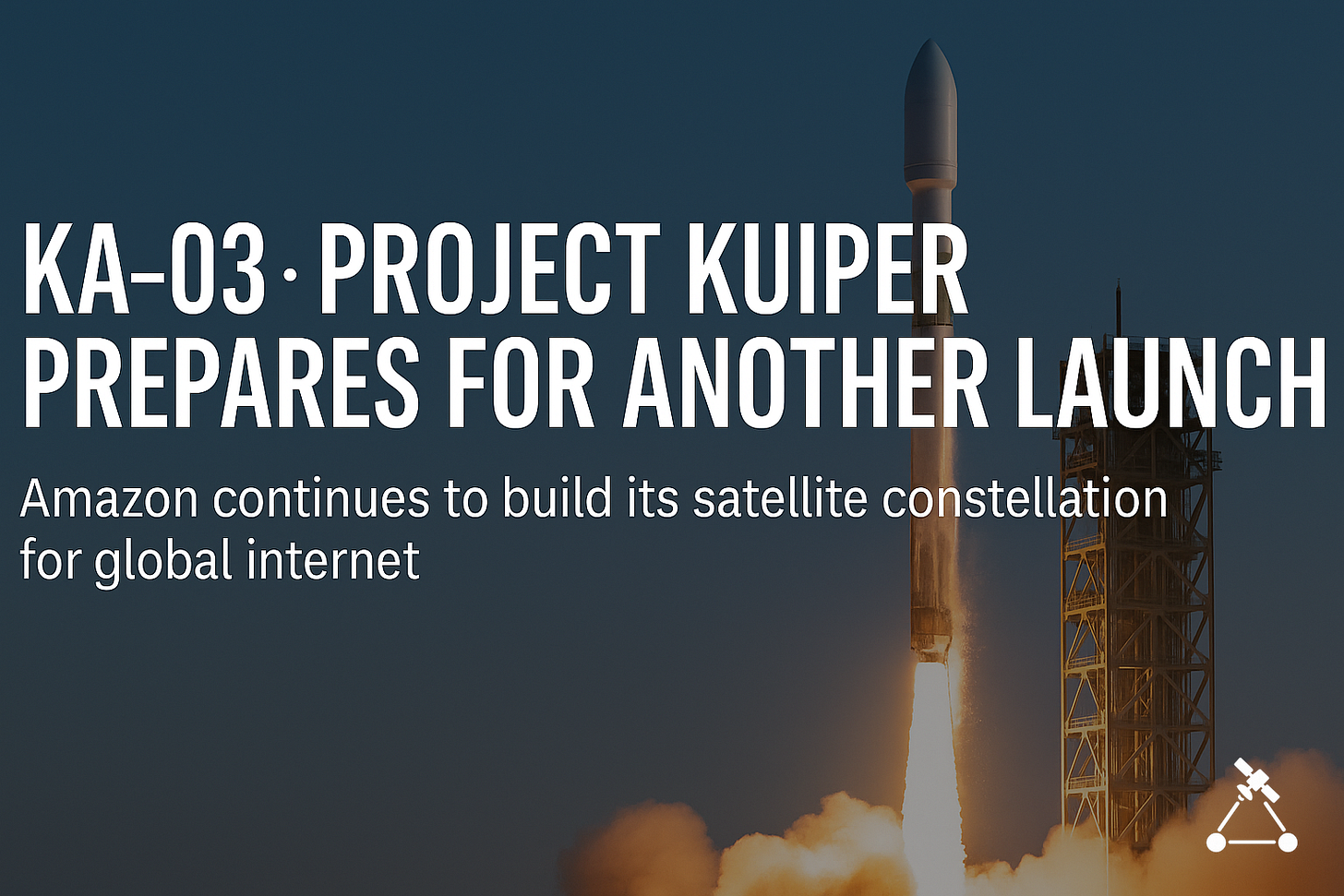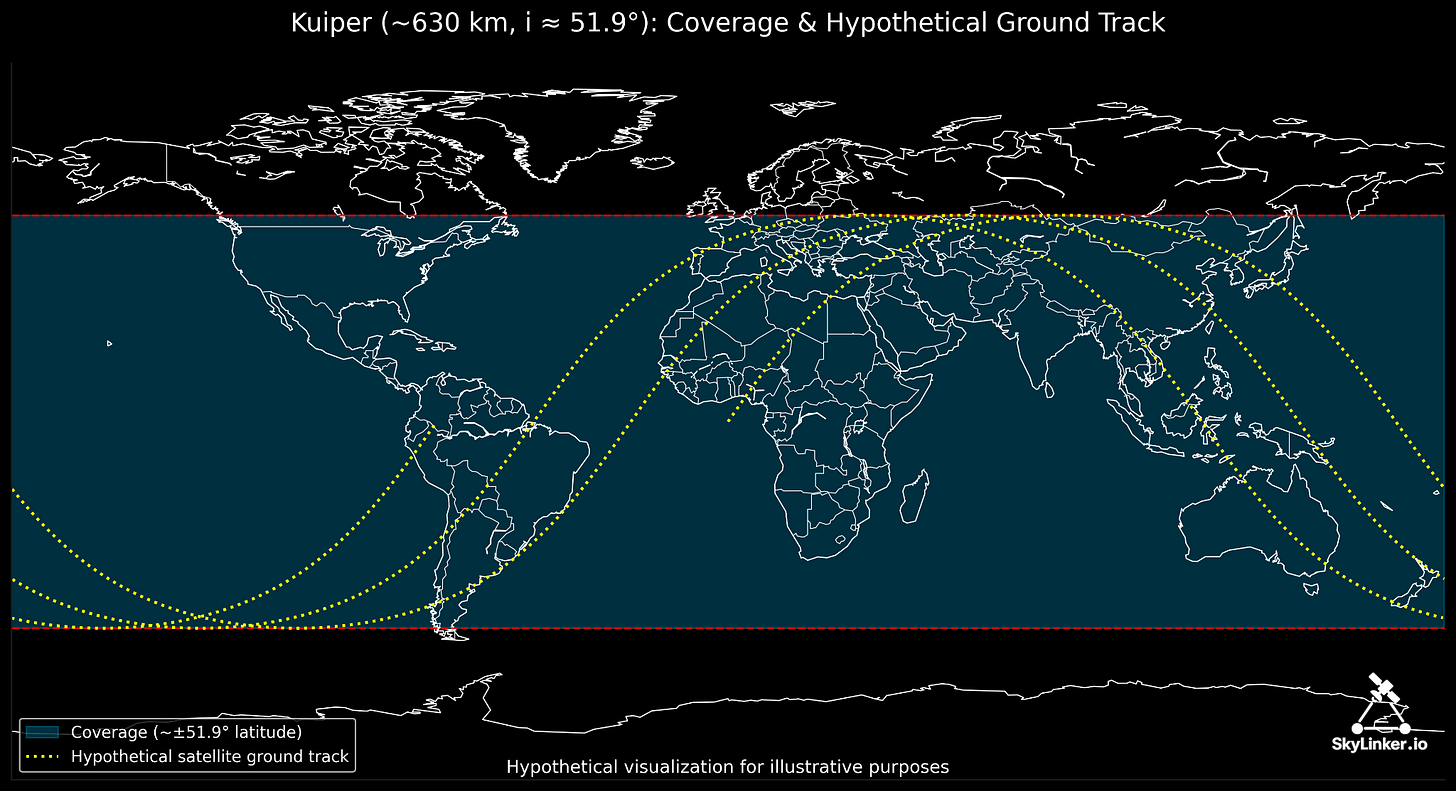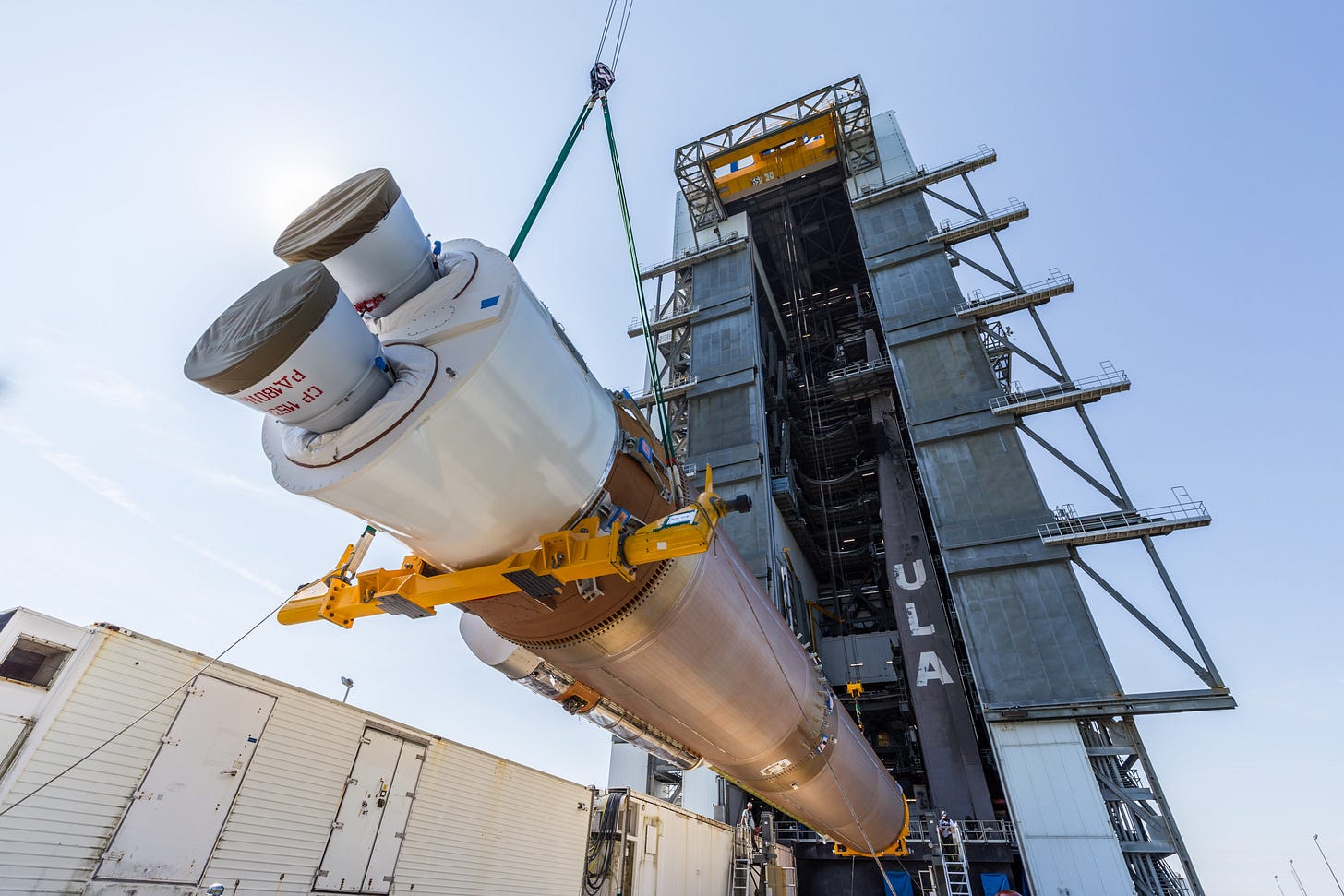KA-03 - Project Kuiper prepares for another launch
Amazon continues to build its satellite constellation for global internet
Amazon is accelerating the deployment of its own satellite system, Project Kuiper. On September 25, 2025, the next mission — KA-03 — is scheduled to launch, carrying another 27 satellites into orbit aboard a ULA Atlas V 551 rocket from Cape Canaveral. This is another launch in cooperation with ULA and marks an important step in building the project’s operational infrastructure.
Continuation of the mission series
The previous launches — KA-02 (June 23, Atlas V) and KF-02 (August 11, Falcon 9) — have already placed satellites into operational orbit. In both cases, the spacecraft entered planes with an inclination of approximately 51.9°, which form the basis of the first phase of the constellation.
The new KA-03 launch is also expected to reinforce the same orbital group. This sequence allows Kuiper to quickly increase satellite density in key planes and ensure continuous coverage.
Why exactly 51.9°?
An orbit with an inclination of about 52° covers the regions between 52° north and 52° south latitude. This includes:
almost all of Europe, including Ukraine,
the United States and much of South America,
northern and central Africa,
India, China, and most of Asia,
northern Australia.
In other words, this orbital plane encompasses the majority of the world’s most densely populated regions. That is why Phase 1 of Project Kuiper focuses on building out these planes, with the goal of offering its first commercial services by the end of 2025.
A critical deadline
Amazon has binding obligations to the FCC: by mid-2026, the company must deploy at least half of its constellation — more than 1,600 satellites. Every launch, therefore, becomes part of a tightly structured schedule.
The investments in ground infrastructure speak for themselves as well: the new facility in Florida can produce up to 100 satellites per month, supporting a rapid launch cadence for upcoming campaigns.
Of course, this pace is far slower than SpaceX’s Starlink, which is already producing about 70 satellites per week. But for Jeff Bezos’ team, the immediate priority is not to overtake Starlink, but rather to secure a foothold in the global operator market, after which it will be possible to compete for various customer segments.
Looking ahead
The KA-03 launch not only adds more satellites to the network but also underscores the strategic logic: first saturating the 51.9° planes, and only then moving on to other orbital shells. In this way, Kuiper is gradually building the backbone of global coverage.
This means that very soon, users in Europe, the Americas, Asia, and Africa will be able to access Amazon’s high-speed internet from space.
The launch can be followed on the mission page at ULA’s website.
Good luck to this and future Kuiper missions.




